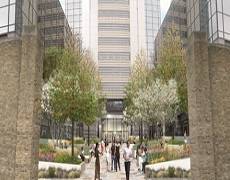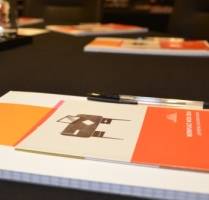November 20, 2014
Land Securities takes full control of Thomas More Square for £85.3m
 Land Securities has taken full control of Thomas More Square, in London’s E1 for £85.3 million. It acquired the 50 per cent share it doesn’t already own from an affiliate of its joint venture partner the Ontario Teachers’ Pension Plan Board. The Thomas More Square Estate, which is located between St Katharine Docks and London Dock – totals approximately 4.2 acres and includes six office buildings incorporating retail, leisure and parking. Land Securities was granted planning permission in June 2014 for a comprehensive refurbishment of Building 3 at Thomas More Square and a redesign of the estate’s public realm. The plans for the 570,000 sq ft estate include 200,000 sq ft of fully refurbished office and retail space in Building 3 which will include a new double height entrance and an extensive business lounge. Tenants Ipsos MORI and Mitsui O.S.K. Lines (“MOL”) have already let 97,000 sq ft of Building 3 on 15 year leases with 10 year breaks; while a further 100,000 sq ft will be available from mid-2015. (more…)
Land Securities has taken full control of Thomas More Square, in London’s E1 for £85.3 million. It acquired the 50 per cent share it doesn’t already own from an affiliate of its joint venture partner the Ontario Teachers’ Pension Plan Board. The Thomas More Square Estate, which is located between St Katharine Docks and London Dock – totals approximately 4.2 acres and includes six office buildings incorporating retail, leisure and parking. Land Securities was granted planning permission in June 2014 for a comprehensive refurbishment of Building 3 at Thomas More Square and a redesign of the estate’s public realm. The plans for the 570,000 sq ft estate include 200,000 sq ft of fully refurbished office and retail space in Building 3 which will include a new double height entrance and an extensive business lounge. Tenants Ipsos MORI and Mitsui O.S.K. Lines (“MOL”) have already let 97,000 sq ft of Building 3 on 15 year leases with 10 year breaks; while a further 100,000 sq ft will be available from mid-2015. (more…)

























November 19, 2014
Worktech 14 London focuses on wellbeing, wherever we choose to work
by Sara Bean • Comment, Events, Facilities management, Flexible working, Wellbeing
The variety of ways in which technology can help us thrive at work was one of the key themes of the first day of Worktech 14, which also provided yet more evidence that the workplace is no longer based in any one place. There were some interesting ruminations on the changing values of the workplace, which included the challenges of managing mobile working and its wider effects on our wellbeing; a topic that merited a whole series of sessions, including, how office design can aide brain function; analysing the psychological effects of the ‘always on’ culture and the role of the employer in combating the rise in western obesity. Meeting room no-shows run at around 35% for most companies and in an illuminating co-presentation on estates utilisation with Condeco, Bruce Everest of Vodafone described how the mobile giant has transformed its offices into collaborative space. There were also some thought provoking sessions that peered into the future, including the statement by a speaker from none other than Intel that ‘technology alone is not our salvation’ and a fascinating glimpse into the workplace of 2040 provided by Marie Puybaraud of Johnson Controls. (more…)